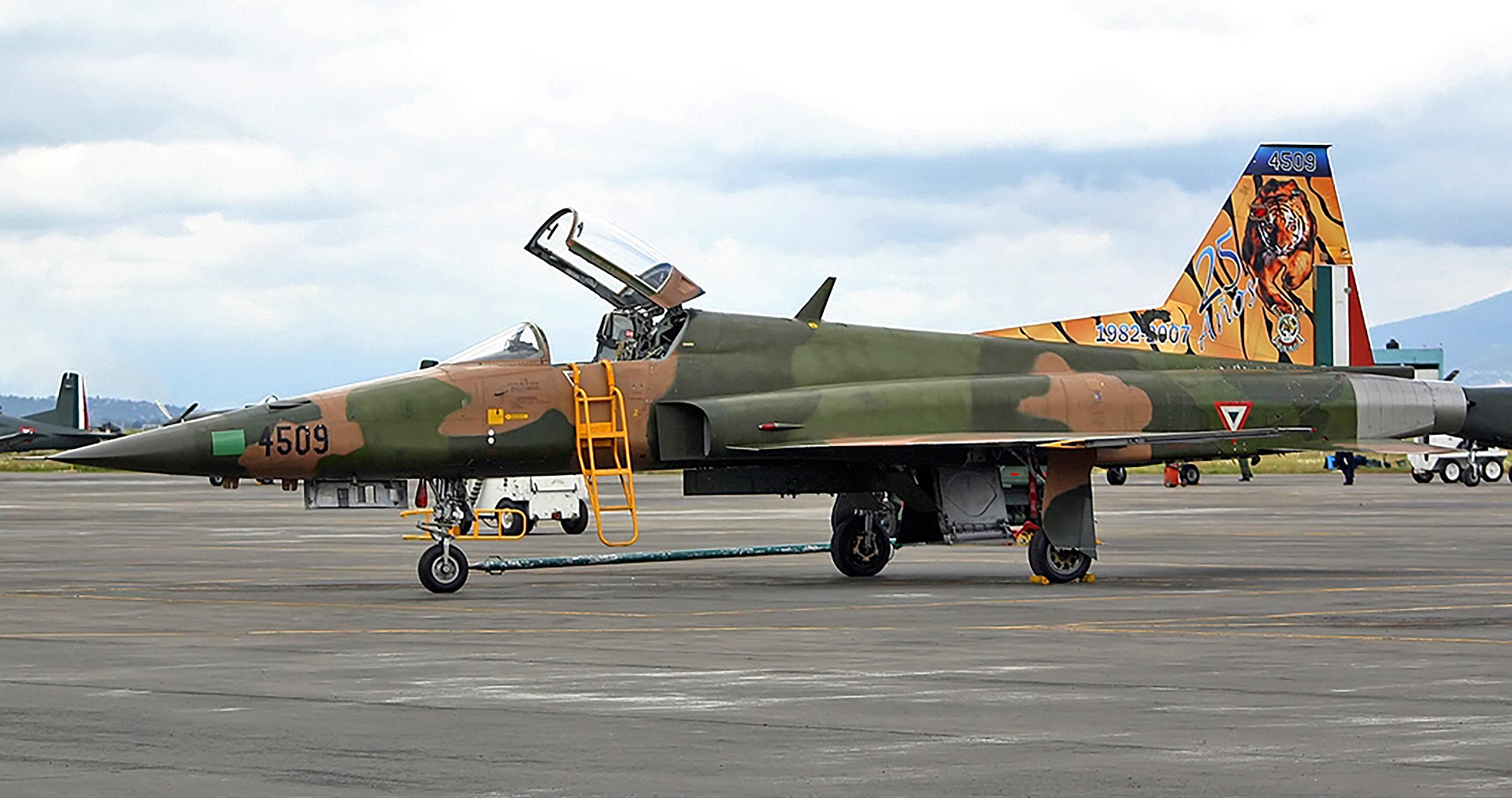The Mexican Air Force has quietly retired its tiny fleet of just eight Northrop F-5E and two F-5F Tiger IIs. These aircraft represented Mexico’s entire fighter force and there seems to be no replacement in the works for them at this point in time.
Mexico purchased 12 Tiger IIs from Northrop in 1982 via a US Foreign Military Sales (FMS) program dubbed Peace Aztec. Before the deal was inked, Mexico experienced a turbulent decade trying to purchase a new light fighter. After the US rejected an initial sale of F-5E/Fs to to the country in the early 1970s, the US then went on to spoil Mexico’s acquisition of Israeli Kfir C2s powered by US-built General Electric J79 turbojets. Finally, nearly a decade later, a much smaller sale of just a dozen F-5s finally went through.
The deal cost Mexico $110m and included pilot training and maintenance crew instruction, some spare parts and support, as well as earlier versions of the AIM-9 Sidewinder, an arsenal of Mk82 and Mk83 bombs and rockets and rocket pods. That is a lot of bang for your buck, equalling less than $9m per unit all-in.
Mexico’s F-5s went on to serve steadily for 34 years. Although they were fairly rudimentary fighters, having no beyond-visual-range air-to-air or smart weapons capabilities, they gave Mexico at least some high-performance air defense capacity.
Still, having just a dozen F-5s didn’t really allow Mexico to protect the skies over its entire country in a persistent manner, far from it actually. Although this small inventory of fighters did allow for focused air sovereignty missions over key population centers and during major events. Over the decades Mexico’s F-5s were also heavily involved in counter narcotics operations alongside their T-33/AT-33 stablemates. Today the T-33/AT-33s are also gone, having finally been retired in 2007.

Mexico’s F-5s may not be highly upgraded like some of those still in service around the world (Brazil’s F-5EMs, for instance), but they are some of youngest F-5E/Fs around, ones that have some enhanced “late-model” features. These include flat “shark” noses, enlarged leading-edge root extensions, and enlarged vertical tail extensions that runs down the spine of the jet. Some slight enhancements—upgraded AN/APQ-159 V-5 radars and GPS navigation systems—were made over the years, particularly when the jets were overhauled in the early 2000s.
It is clear that the remaining 10 F-5s in the Mexican Air Force have seen greatly reduced availability in recent years, with around serviceable five jets at any given time. The types last flight included just three examples and occurred on September 16, 2016, during Mexico’s independence celebrations.
A replacement for Mexico’s Tiger IIs has been rumored to be in the works for a long time, under various guises, including second hand F-16s and F/A-18s, but nothing has ever come of it. There was even a supposed plan for the Mexican Navy to acquire Su-27s for surveillance and other duties, but this too never came to fruition.
Now the Mexican Air Force will have to rely on turboprop powered PC-9/7 and T-6C+ light attack trainers for armed air patrols, neither of which are close to substitutes for fast-jets. Not being able to organically supply rudimentary air sovereignty capabilities is a hallmark of a failing state as much as anything else, especially for a country in the western hemisphere and the physical size of Mexico.

Considering the security situation around the world, Mexico blatant lack of any fast-jet capability, even advanced jet trainers armed with cannons and heat-seeking air-to-air missiles, may also impact Mexico’s ability to host large events and even world leaders in the future.
Contact the author: Tyler@thedrive.com
